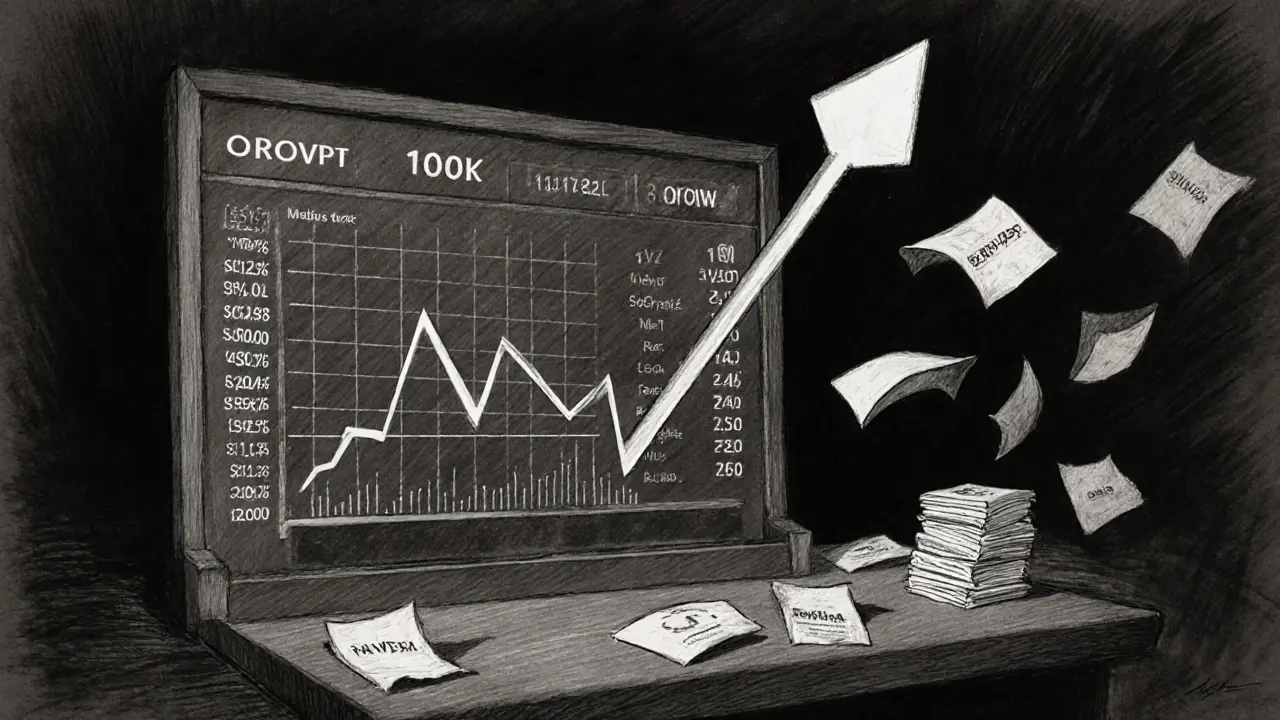Crypto Liquidity Comparison Tool
This tool compares key characteristics of high and low liquidity crypto markets to help you make informed trading decisions.
High Liquidity Markets
- Tight bid-ask spreads (0.01%-0.1%)
- Fast execution times
- Deep order books ($100M+ per side)
- Low slippage (<0.2%)
- Resistant to manipulation
Low Liquidity Markets
- Wide bid-ask spreads (5%-10%+)
- Slow or partial fills
- Shallow order books (<$1M)
- High slippage (3%-10%+)
- Susceptible to manipulation
Quick Comparison Table
| Metric | High Liquidity | Low Liquidity |
|---|---|---|
| Bid-Ask Spread | 0.01% - 0.1% | 5% - 10%+ |
| Typical Slippage | ≤0.2% | 3% - 10%+ |
| Order-Book Depth (USD) | $100M+ on each side | Under $1M |
| Average Daily Volume | Billions (BTC, ETH) | Thousands - low millions |
| Manipulation Cost | Requires >$100M | Can be manipulated with smaller amounts |
Trading Strategy Guide
High Liquidity Trading
- Use scalping or day-trading strategies
- Take advantage of tight spreads
- Execute large orders with minimal slippage
- Perfect for active traders
Low Liquidity Trading
- Prefer limit orders over market orders
- Consider long-term holding strategies
- Be cautious of price manipulation risks
- Monitor order-book depth carefully
Ever tried to buy a token only to watch the price jump 10% as soon as your order hits? That’s the pain of low liquiditythe ease of converting a crypto asset into cash or another asset without moving the market price. In contrast, when you trade Bitcoin on Binanceone of the world’s largest centralized crypto exchanges or on Coinbasea leading U.S. exchange with deep order books, the price barely wobbles. Understanding the gap between high and low liquidity markets can be the difference between steady profits and a bruising loss.
Key Takeaways
- High liquidity means tight spreads, fast execution, and low slippage; low liquidity flips all of those.
- Major assets like Bitcointhe first cryptocurrency, launched in 2009 and Ethereumthe leading smart‑contract platform enjoy deep order books and billions in daily volume.
- Small‑cap tokens and many DeFi pairs suffer from shallow order books, wide bid‑ask spreads, and higher manipulation risk.
- Choose scalping or day‑trading for high‑liquidity markets; prefer limit orders or long‑term holds for illiquid assets.
- Monitor order‑book depth, trading volume, and spread size to gauge liquidity before every trade.
What Crypto Liquidity Actually Means
In plain English, crypto liquidity is how quickly you can buy or sell a coin without pushing the price up or down. The metric isn’t just a number; it’s a blend of market participants, order‑book depth, and recent trading volume. When the market is liquid, a $10,000 order can be filled in seconds with almost no price change. When it’s illiquid, the same order might eat through several price levels, leaving you with a much worse execution price.
Traits of High‑Liquidity Crypto Markets
- Instant execution: Orders fill within milliseconds because there are always counterparties.
- Tight bid‑ask spreads: Major pairs trade with spreads as low as 0.01%-0.1%.
- Deep order books: Hundreds of price levels on each side, often visible on order bookthe list of pending buy and sell orders on an exchange screens.
- Low slippage: The difference between expected and actual fill price is negligible.
- Resilience to manipulation: It would take massive capital to move the price.
Traits of Low‑Liquidity Crypto Markets
- Slow fills or partial fills: Large orders often only fill a fraction before the price jumps.
- Wide spreads: Illiquid tokens can see spreads of 5%-10% or more.
- Shallow books: Only a few orders sit at each price level, making the market fragile.
- High slippage: You might see a 3%‑10% price gap between order placement and execution.
- Manipulation hot‑spot: A single whale can bump the price significantly.

High vs Low Liquidity - Side‑by‑Side Comparison
| Metric | High Liquidity | Low Liquidity |
|---|---|---|
| Bid‑Ask Spread | 0.01%‑0.1% | 5%‑10%+ |
| Typical Slippage | ≤0.2% | 3%‑10%+ |
| Order‑Book Depth (USD) | $100M+ on each side | Under $1M |
| Average Daily Volume | Billions (BTC, ETH) | Thousands‑low millions |
| Manipulation Cost | Requires >$100M | Can be <$1M |
How Liquidity Shapes Trading Strategies
If you love fast, frequent trades, high‑liquidity assets are your playground. Scalpers squeeze profit from sub‑cent‑level moves because tight spreads and near‑zero slippage keep costs low. Day traders also thrive here - they can swing positions multiple times a day without fearing a nasty fill price.
In an illiquid market, the rule of thumb flips. Market‑making becomes risky; instead, seasoned traders lean on limit orders to set the price they’re willing to accept, avoiding the surprise of a market order that eats through the book. Long‑term holders often buy low‑liquidity tokens expecting the project to mature and liquidity to improve, but they must accept the cost of getting in and out.
High‑risk speculators sometimes chase low‑liquidity tokens precisely because a small amount of buying pressure can crank the price up 30%‑50% in minutes. The payoff can be huge, but the downside is equally brutal if the market reverses.
Practical Ways to Measure Liquidity Before You Trade
- Check the order‑book depth: Look at the cumulative volume within a 1‑% price band. A deep book shows plenty of counterparties.
- Watch the spread: Tight spreads signal healthy liquidity. If you see a 10% spread, think twice.
- Review 24‑hour volume: Consistently high volume (millions of dollars) usually means the market can absorb larger trades.
- Inspect liquidity pools on decentralized exchangesplatforms like Uniswap that use automated market makers: A pool with $10M+ in assets provides near‑instant swaps, but beware of price impact when the pool is thin.
- Use tools like Bookmap or Glassnode: Real‑time heatmaps reveal order flow and hidden liquidity that static charts miss.
Risk Amplifiers in Low‑Liquidity Environments
When liquidity dries up, price discovery stalls. You might see a token’s price spike on a single trade, then tumble the next day as a whale exits. This volatility can trigger stop‑loss orders, causing a cascade of forced sales that further depresses the market.
Regulatory news can also exacerbate liquidity crunches. After the Bybit breach on February 21, 2025, Ethereum’s on‑chain volume surged temporarily before normalizing, but many smaller tokens saw volume collapse for weeks, leaving traders stuck.
Finally, low‑liquidity markets attract “pump‑and‑dump” schemes. A coordinated buying spree can push the price up dramatically, only to be followed by a rapid dump that erodes most participants’ capital.
Tips to Protect Yourself in Illiquid Markets
- Never use market orders for small‑cap tokens. Always set a limit price that's realistic given current depth.
- Size your position relative to market depth. If the total buy side within 2% is $200k, keep your order under $20k to avoid moving the market.
- Keep an eye on pool health. On AMM platforms, watch the “price impact” metric - high impact means you’ll pay a lot more than the spot price.
- Diversify across liquid assets. Even if you’re interested in a niche token, allocate the bulk of your capital to BTC, ETH, or other high‑liquidity coins.
- Set wider stop‑losses. Tight stops in volatile, illiquid markets get triggered too soon.

Frequently Asked Questions
Why does Bitcoin have such a tight spread compared to a new meme token?
Bitcoin trades on many large exchanges with millions of daily buyers and sellers. That depth squeezes the bid‑ask spread to a fraction of a percent. A meme token usually lives on a handful of markets with thin order books, so the spread widens to cover the risk of price swings.
Can I use a decentralized exchange to get better liquidity?
DEXes rely on liquidity pools. If a pool is large (e.g., ETH/USDC with $100M), swaps are almost as fast and cheap as on a centralized exchange. But many new tokens only have tiny pools, so the price impact can be huge. Always check the pool size and the “price impact” calculator before swapping.
How do I measure order‑book depth quickly?
Most exchange interfaces let you hover over the depth chart. Summarize the cumulative volume within a 1% price band on both the bid and ask side - that’s your depth snapshot. If the total is under $500k, treat the market as low‑liquidity.
Is low liquidity always a bad thing for long‑term investors?
Not necessarily. If you believe a project's fundamentals are strong, you might accept the short‑term illiquidity for a potentially high upside later. Just be prepared to hold longer and possibly sell at a discount if the market never expands.
What role do market makers play in crypto liquidity?
Market makers post continuous buy and sell orders, narrowing spreads and deepening the order book. On centralized platforms they’re often professional firms; on DEXes they’re the liquidity providers who earn fees for supplying assets to pools.


Liquidity is just a hype, you can trade any pair and hope for the best.
When you examine liquidity, you discover a tapestry woven from countless market participants; each order, each quote, contributes to the broader ecosystem. High‑liquidity venues, with their razor‑thin spreads, enable swift arbitrage, yet they also attract algorithmic hunters who thrive on micro‑inefficiencies. Conversely, low‑liquidity markets often suffer from pronounced price impact, making large positions a risky venture, especially for newcomers. It is essential, therefore, to align your strategy with the depth of the order book, lest you become a victim of slippage. Remember, the market’s pulse is reflected not just in volume, but in the resilience of its order flow.
Frankly, the article glosses over the pitfalls of thin order books, offering an overly rosy picture.
I appreciate the clear breakdown, especially the visual cues that help differentiate spread sizes; it makes the concept accessible for beginners.
Sure, because everyone loves reading about “deep order books” while sipping their morning coffee.
Oh, the drama of liquidity! Investors tremble when the spreads widen, as if the very ground beneath them shifts. In high‑liquidity markets, trades glide like silk, smooth and effortless, while in the low‑liquidity abyss, every order feels like pushing a boulder uphill. It’s a tale as old as markets themselves-confidence versus chaos. The author paints a picture of calm seas, yet fails to mention the hidden storms of hidden orders and dark pools. Still, the tool presented is a beacon, shedding light on where the true currents flow. Remember, a trader without awareness is destined to drown in the shallow waters of ignorance. Embrace the knowledge, and you may surf the waves of profit.
While the poetic description captivates, it neglects the stark reality that American exchanges, under stringent regulation, provide the most reliable high‑liquidity venues; no other jurisdiction matches this level of oversight.
One could argue that liquidity is less a metric and more a state of collective trust; when participants believe in the fairness of the system, spreads naturally compress.
Great job simplifying the spread concept! 👍
Don’t forget, US‑based stablecoins dominate the high‑liquidity pools, keeping the market strong.
Understanding slippage is crucial: when you place a large buy, the price may move against you, turning a potential profit into a loss. A deep order book can absorb sizable trades, minimizing this effect, while a shallow book amplifies it. Use limit orders to set your maximum price, and monitor the depth chart before committing. Remember, liquidity isn’t static; it fluctuates with news, time of day, and market sentiment. 🕒 By aligning your entry with peak liquidity windows, you reduce execution risk. Diversify across exchanges to hedge against localized illiquidity. In the end, knowledge wins over speculation.
The sheer volume on major US exchanges proves that domestic platforms are the backbone of crypto liquidity, and we should prioritize them.
It’s encouraging to see tools that demystify market depth; they empower traders to make data‑driven decisions.
Exploring cross‑chain liquidity bridges reveals fascinating arbitrage loops; they often go unnoticed, yet they shape price convergence across ecosystems.
Honestly, the tool feels slick and super useful for spotting where the action’s at.
Liquidity, in its essence, is the lifeblood that courses through the veins of any thriving market, granting traders the ability to slip in and out of positions with the elegance of a dancer; without it, even the most promising strategies crumble like sandcastles at high tide. When you spotlight high‑liquidity arenas, you unveil a realm where bid‑ask spreads shrink to whisper‑thin margins, offering the tantalizing prospect of near‑perfect price execution. Deep order books, brimming with millions of dollars on each side, act as sturdy fortresses that safeguard against the ravages of slippage, ensuring that your grand orders don’t leave you with an unexpected bill. Conversely, low‑liquidity pockets are akin to treacherous quicksand, pulling unsuspecting participants into costly price gaps and erratic fills. The beauty of the comparison tool lies in its ability to paint these contrasts with vivid clarity, allowing you to gauge the health of a market at a glance. By scrutinizing the spread percentages, you can discern whether a token is being traded in a competitive arena or languishing in a niche, ill‑liquidized corner. Fast execution times, another hallmark of robust liquidity, empower high‑frequency traders to capitalize on fleeting arbitrage windows before they evaporate. Moreover, the tool’s visual cues-green for high, red for low-serve as intuitive signposts that guide both novices and seasoned veterans alike. Remember, liquidity isn’t a static snapshot; it ebbs and flows with market sentiment, macro‑economic tides, and even the time of day. Seasonal spikes, such as during major protocol upgrades or regulatory announcements, can temporarily inflate depth, creating golden opportunities for astute participants. However, this volatility also demands vigilance; a sudden exodus of market makers can temporarily transform a previously safe harbor into a stormy sea. Leveraging the data, you can strategically time your entries during periods of peak depth, thus minimizing execution risk. Combine this with disciplined risk management, and you craft a resilient trading playbook capable of weathering both bull and bear climates. In the grand tapestry of crypto investing, mastering liquidity is akin to mastering the brush strokes of a master painter-each deliberate movement contributes to the masterpiece of consistent profitability. Embrace the insights, stay curious, and let the market’s rhythm guide your next trade.
Crypto’s liquidity game is fierce, and only the bold survive the scramble for the deepest pools.